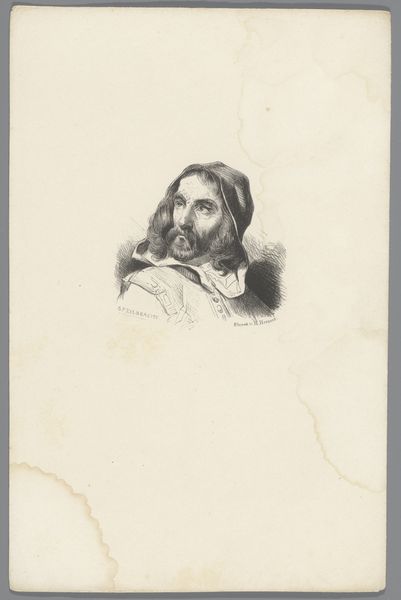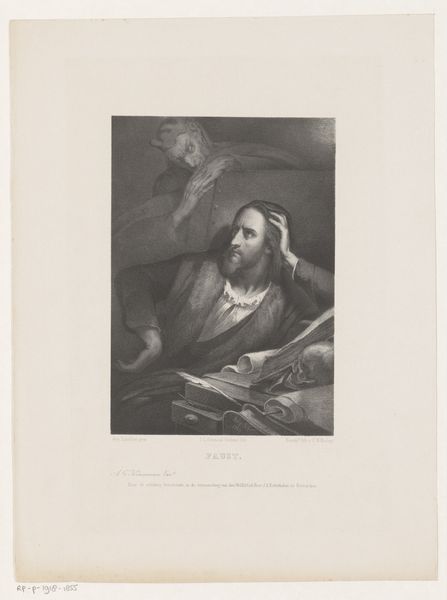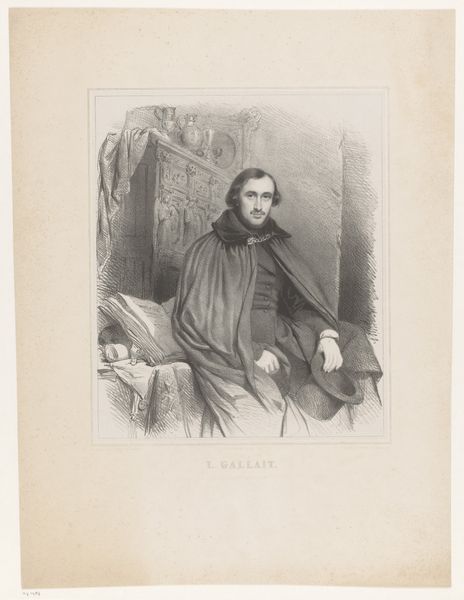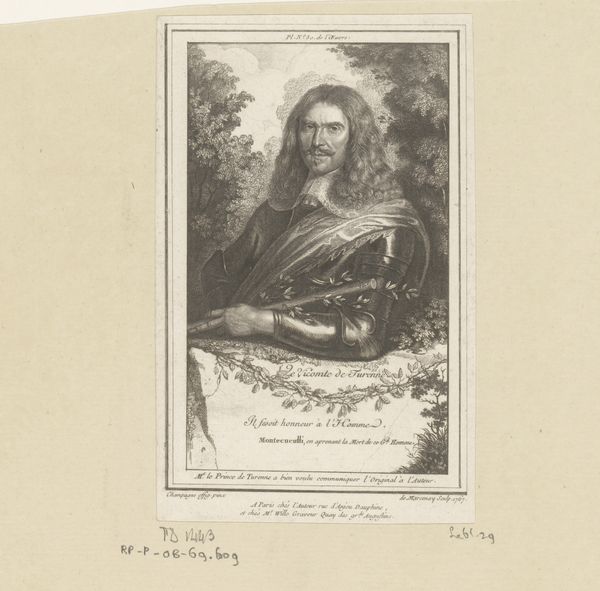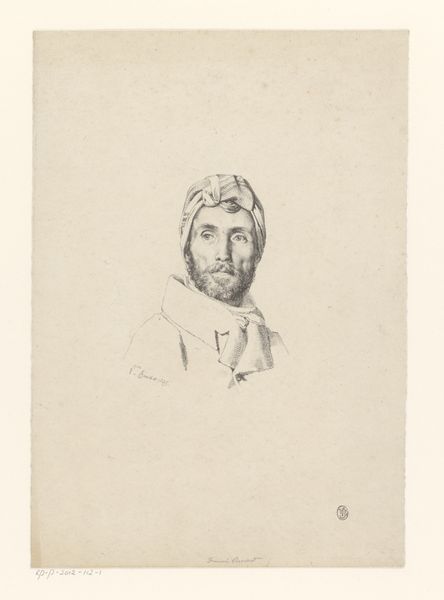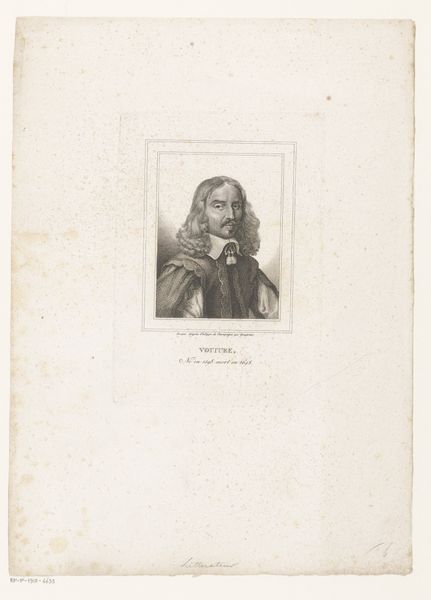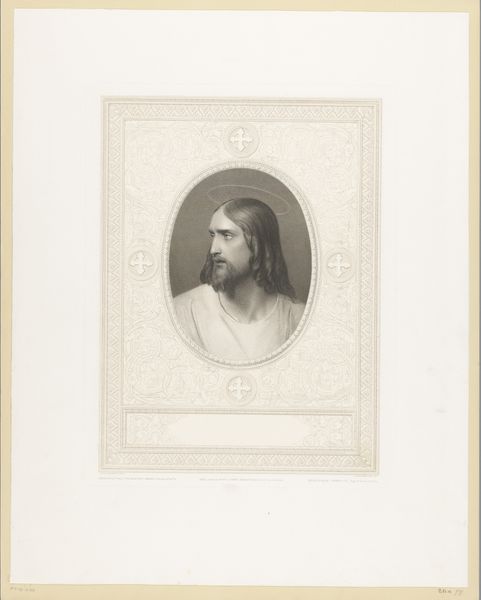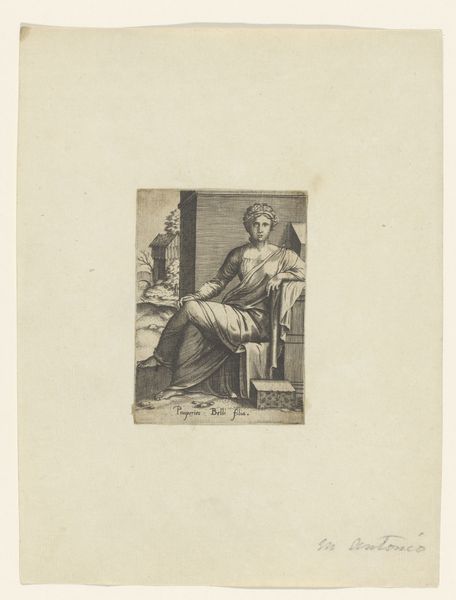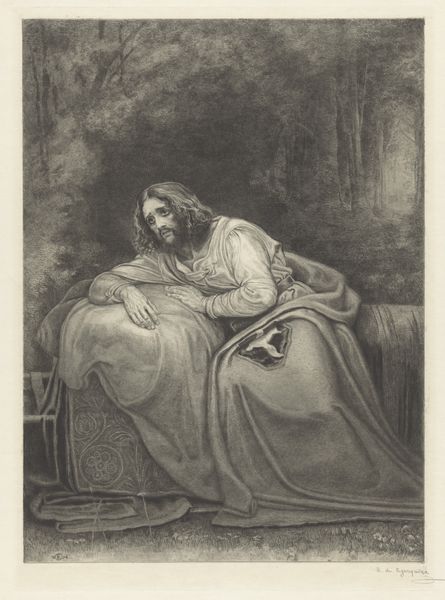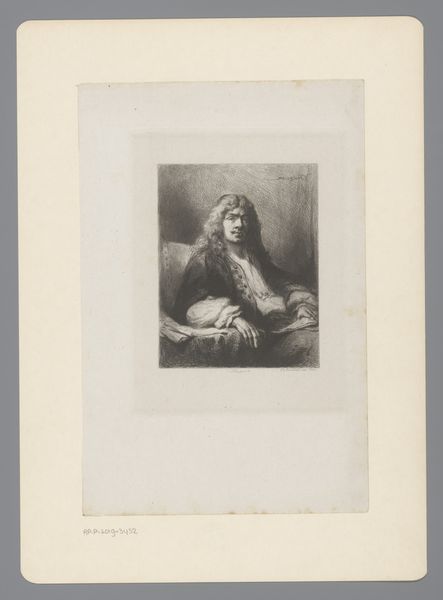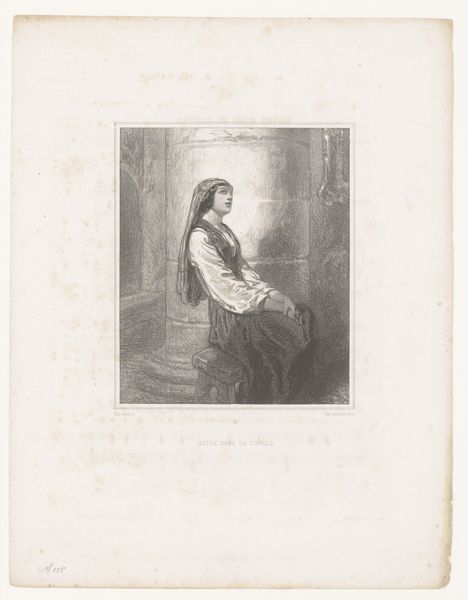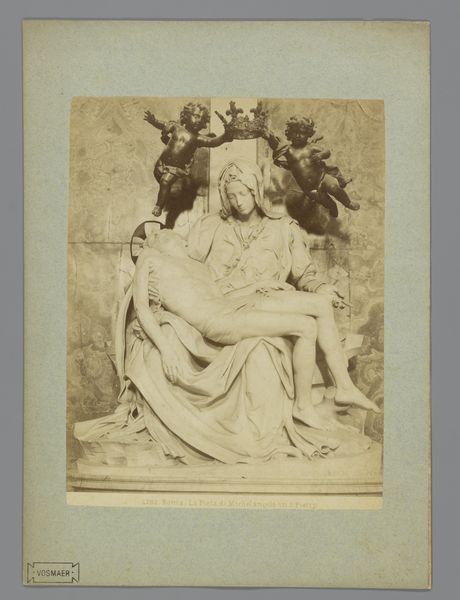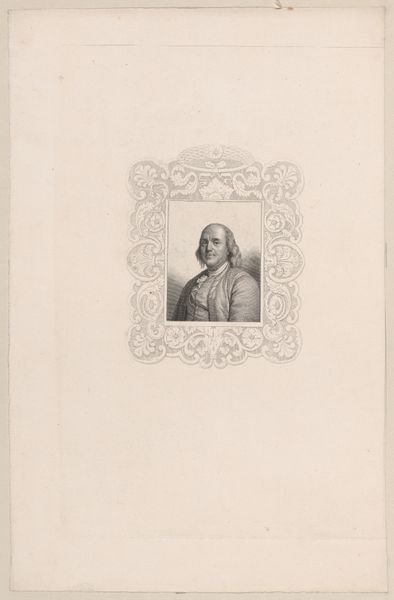
Fotoreproductie van het schilderij Faust van Ary Scheffer 1855 - 1885
0:00
0:00
Dimensions: height 101 mm, width 61 mm
Copyright: Rijks Museum: Open Domain
Curator: Here we have a photo reproduction of Ary Scheffer's painting "Faust," dating roughly between 1855 and 1885, found here at the Rijksmuseum. The portrait depicts the titular character in a moment of what appears to be deep contemplation, with another figure lurking ethereally in the background. What is your first impression? Editor: My immediate sense is of confinement. The monochrome tones coupled with the close framing create a sort of visual weight, an almost tangible density in the photographic material itself, echoing the subject's burdened mind. Curator: It's interesting you mention weight. Knowing this is a reproduction helps frame the dialogue between production, image, and subject. Scheffer's original painting speaks to a broader fascination in the Romantic period with themes of ambition, morality, and the individual's struggle against societal or supernatural forces. How does its material translation here—as a photograph of a painting—intersect with those themes? Editor: It adds another layer, doesn't it? Photography in that era had strong ties to portraiture, so we get another distancing that also suggests class. Reproduction makes this artwork far more accessible, cheaper—therefore speaking to consumerism. By its materiality, this reproduction democratizes Faust's struggles by allowing it into potentially anyone's home. Curator: Exactly. The rise of photography coincides with the spread of democratic ideals. This reproduction grants greater access to both the art and, arguably, to the complicated social commentary embedded in the Faustian legend. But, tell me, looking at the wispy apparition behind him, who do you think he’s listening to? Whose interests is he serving in the making of this photo-reproduction? Editor: Hah! The devil's work manifested as Capital! Well, that brings it home. Thank you. Curator: My pleasure. Hopefully, we have opened up another way of reading these portraits today! Editor: Indeed! A dark day for aesthetics, a bright day for cultural workers!
Comments
No comments
Be the first to comment and join the conversation on the ultimate creative platform.
